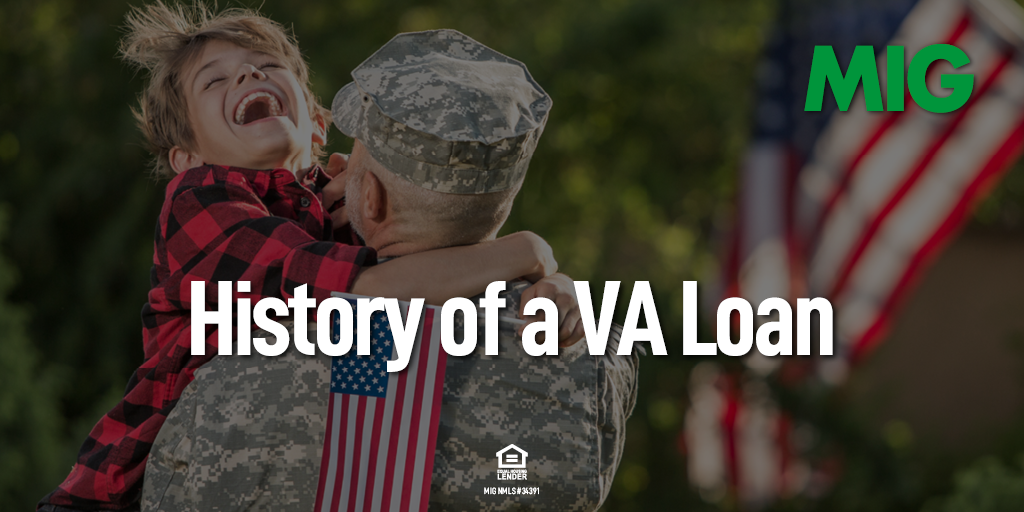History of the VA Loan

Posted by : Admin
There are a wide variety of loan programs for consumers looking to buy a home. For members of the military, there is a program that offers even more attractive benefits and advantages: the VA Loan.
How does this type of loan work, why was it created, and who is eligible to use it? Read on for more information on the history of the VA loan and how it may benefit you.
When and Why the VA Loan Program Was Created
The U.S. Congress passed the Servicemen’s Readjustment Act in 1944, and it was signed into law by President Franklin D. Roosevelt. Its original purpose was to support our troops and assist those who were returning from World War II with their integration back into civilian society. Being able to secure a mortgage and own a home was a key aspect of this plan. The VA Home Loan Program was part of this legislation, creating an easier path to homeownership.
How It’s Been Used Over Time
Since its creation, the VA Loan Program has been used in over 24 million mortgages. The program isn’t a mortgage by itself. Rather, it’s a commitment from the government to back a portion of the mortgage loan if the borrower defaults. The government guarantees the loan made by a mortgage lender to the military person or veteran.
The loan program has been used to buy, build, and refinance primary residences since its inception. There have been adjustments to it periodically over the years. For example, the 1970 amendment provided a loan-backed guarantee for mobile homes, a 1974 change allowed veterans to use their eligibility more than once, and the 1992 amendment expanded eligibility to Reservists and the National Guard.
Its Benefits to Military Members
- No Money Down
The first big benefit is the no-money-down option. Most loan programs require at least a small percentage of the home price as a down payment. Saving enough for a down payment can take years to accomplish. With the VA loan program, military personnel can buy a house months, or even years, faster than if they had to save a large down payment. - No Private Mortgage Insurance
VA loan recipients don’t have to pay costly mortgage insurance. With most traditional loan programs, the borrower must either pay 20% of the price down or agree to Private Mortgage Insurance (PMI). PMI guarantees the loan for the lender if the borrower doesn’t pay up. Since the VA loan program already guarantees the loan, PMI isn’t required on VA loans. PMI is expensive and adds significantly to a borrower’s monthly mortgage payments, so being able to forgo this is a big advantage. - Entitlement Doesn’t Expire
The VA Loan Program is available more than once. Those who are eligible don’t need to decide when is the best time to use their eligibility, because their entitlement doesn’t expire. Veterans and other military persons can use it to purchase 1, 2, 5, 10 or more primary residences over the course of their lifetime.
How to Qualify for a VA Loan
The VA loan program is meant for active duty military and veterans who served a minimum of six months, but the list doesn’t end there. National Guard members and Reservists are eligible to participate after six years of service. Spouses of service members who perished or suffered a disability during active duty are eligible as well. Keep in mind the program was recently changed to cover same-sex marriages.
The VA guarantees a portion of approved loans with entitlements, usually covering one-fourth of the loan amount. If you want to pursue your eligibility, you will need your DD Form 214 if you’re a discharged veteran, or your Statement of Service if you’re active duty. Your loan originator can help you secure these documents.
The VA loan program has enabled many active military and veterans to achieve their happy ending of home ownership. If you want to enjoy the benefits you are entitled to from your military service, let us assist you with your VA-backed mortgage loan.


